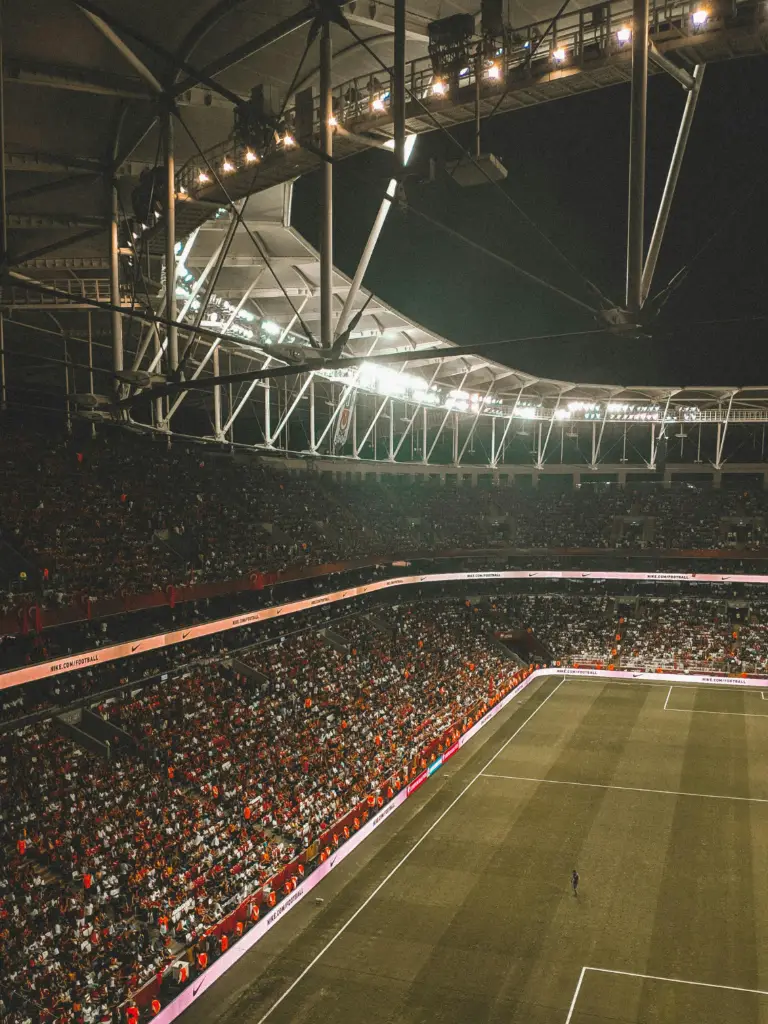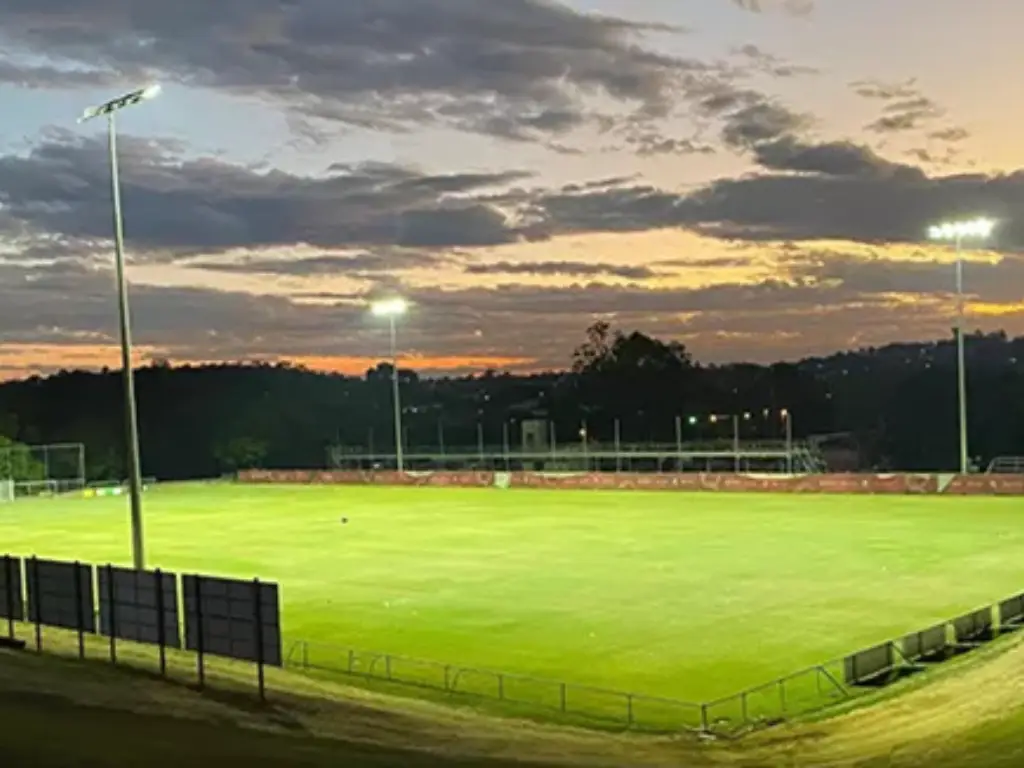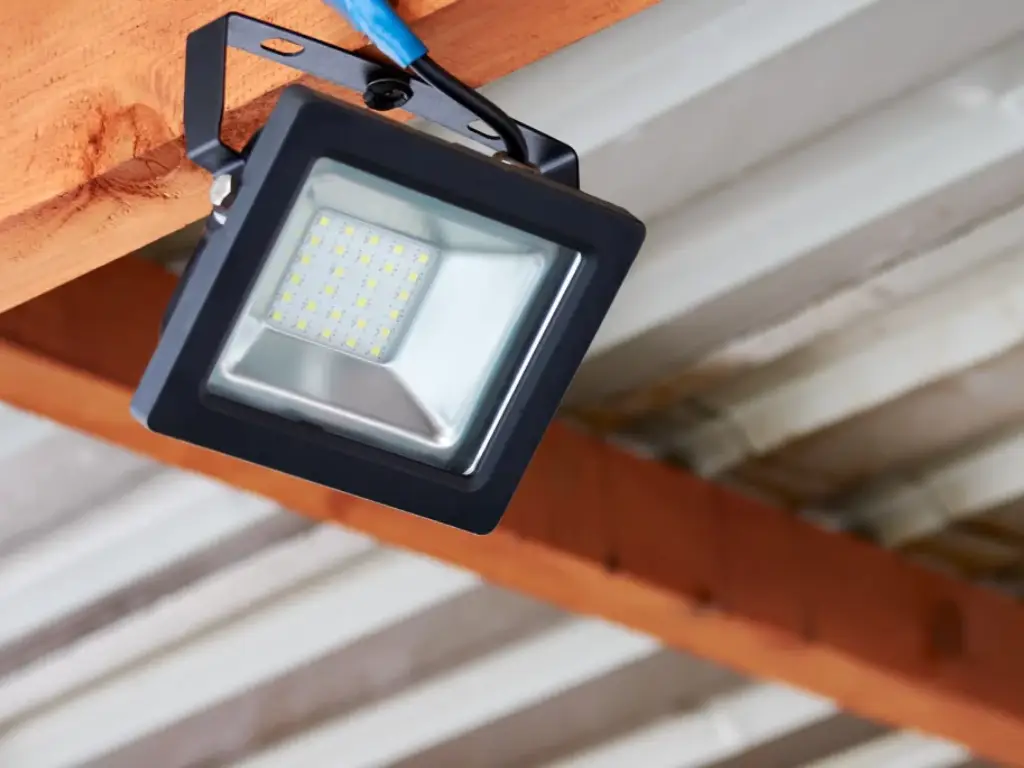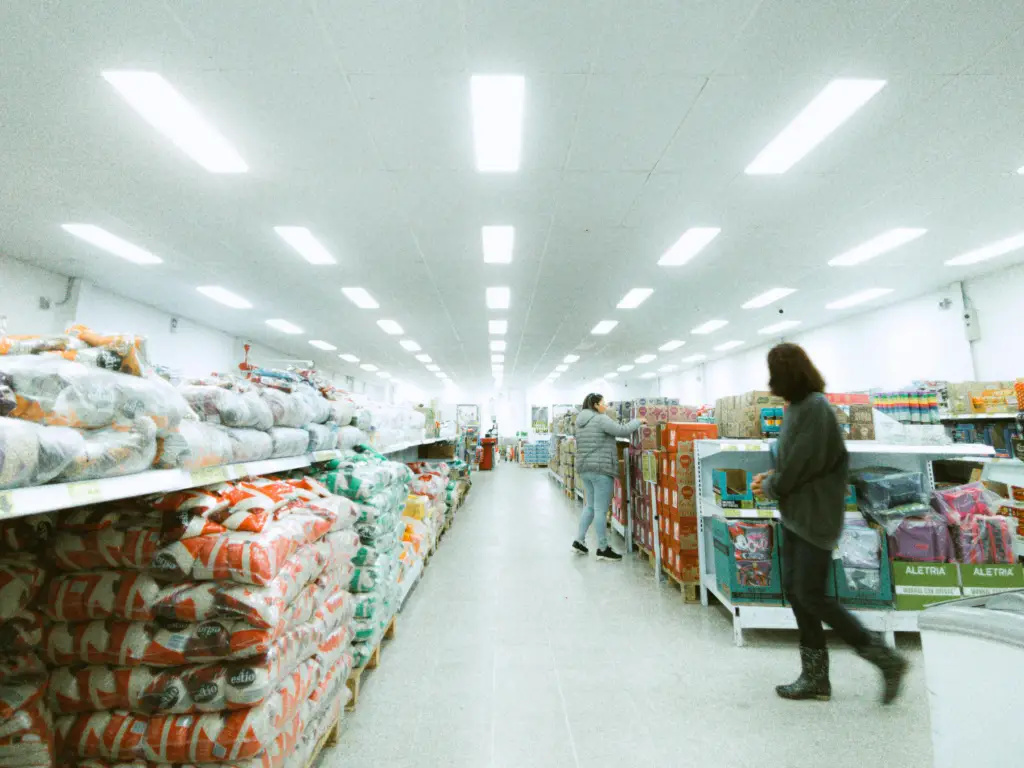The sight of a night soccer match game on the soccer field–the immaculately green field, the colourful uniforms, the crisp trajectory of the ball–is a contemporary marvel of technology. The lighting is at the core of it. The buzz and slow warm-up of HID lamps, namely metal halides, had been the norm of the last decades. They got the job done, but they were a child of their era: inefficient, high-maintenance, and inflexible. The question is no longer whether to use LED lights technology, but how to implement it to achieve the best performance, efficiency, and impact. This guide describes the technical requirements, design concepts, and business aspects of contemporary soccer stadium lighting, offering a clear direction to facility managers, engineers, and project developers to make informed decisions.
From HID to Advanced LED Technology
The shift in HID lighting to LED technology is one of the greatest developments in sports infrastructure. Although HIDs, especially metal halide lamps, were the workhorses of the 20th century, their operational constraints have rendered them mostly obsolete in the presence of better LED systems.
Metal halide lamps operate by conducting an electric arc through a gaseous mixture, which takes a long time to warm up, typically 15-20 minutes, to full brightness. This latency is a serious liability in live events. Any power outage implies a long, game-stopping break. Moreover, they deteriorate significantly with time. A metal halide lamp may lose as much as 50 percent of its original lumen output after half of its relatively short life of 6,000-15,000 hours. This depreciation of lumen, along with a color change to green or pink, reduces the quality of broadcasts and visibility on the field.
In comparison, LEDs are solid-state devices that offer full-power instant illumination. They are not just a step up, they are a paradigm change in performance and efficiency. The benefits are clear and measurable:
- Energy Efficiency: New LED stadium floodlights use 50-75 percent less energy than metal halide lights to generate the same amount of brightness (lumens). In the case of a typical stadium, this would mean tens of thousands of dollars saved on electricity per year.
- Lifespan and Maintenance: A quality LED fixture has a rated life of 50,000 to 100,000+ hours, and maintains most of its brightness over its life. This durability, 5-10 times that of HIDs, significantly cuts the expensive and complicated maintenance cycles of lamp replacement on high masts.
- Light Quality: LEDs have a better Color Rendering Index (CRI), usually >80 or >90, than the ~65 CRI of older metal halides. This implies that colors are more life-like, which is a non-negotiable condition of 4K and HD television broadcasting. The clear, bright light also enhances visibility and minimizes eye strain among players and spectators.
- Control and Flexibility: LEDs can be controlled digitally. They are dimmable, can be programmed to perform dynamic light shows, and can be incorporated into intelligent control systems (such as DMX or DALI) without affecting their life or performance.
The transition to LED is not a choice, it is a strategic move based on the sheer operational advantages, economic payback and the requirements of contemporary sports presentation.
Decoding Professional Lighting Standards & Design Factors
Professional-grade illumination does not mean putting up the most powerful lights; it means achieving specific, internationally accepted standards. These guidelines guarantee the safety of the players, the comfort of the fans, and the perfect broadcasting. The most important ones are Lux (or foot-candles), Uniformity, and Color Rendering Index (CRI).
The following is a breakdown of the common requirements depending on the level of play:
| Level of Play | Horizontal Lux (Avg) | Uniformity (Min/Avg Ratio) | CRI (Minimum) | Application |
| Class III | 200 – 300 lux | 0.5 | 70+ | School Training, Recreational Use |
| Class II | 500 – 750 lux | 0.6 | 80+ | Collegiate & Club Competitions |
| Class I | 1500 – 2500+ lux | 0.7 – 0.8 | 90+ | Professional, FIFA/UEFA Broadcasts |
In addition to these fundamental measures, there are a number of important considerations that a successful lighting design should take into consideration:
- Glare Control: Glare, or brightness that is too high to be comfortable to the eye, is a serious safety concern to the players and a significant nuisance to the spectators. It is reduced by the use of superior optics, shielding, and accurate aiming angles in an effective design. This can be measured by the Unified Glare Rating (UGR) where lower values are preferable.
- Light Spill and Pollution: Uncontrolled light spillage into the adjacent neighborhoods is a frequent source of conflict. Contemporary optical systems are controlled to be precise, with light only being directed to the field of play and little upward “sky glow.” This honors the community and is in line with local ordinances.
- Pole Layout and Height: The quantity, location, and height of lighting poles are essential to the design. The most common arrangement is 4, 6 or 8 poles, or more recently, a “ring of fire” system on the stadium roof. The design has a direct influence on consistency and the possibility to manage shadows.
- Flicker-Free Operation: In television broadcasts, particularly slow-motion replays, the light source should be flicker-free. Poor quality LED drivers may cause flicker that is not noticeable by the human eye but is very noticeable on camera. The broadcast standard is a Television Lighting Consistency Index (TLCI) of >90.
An effective design is a combination of all these factors, and the end result is a perfect installation that will work perfectly under the eyes of cameras, players and fans.
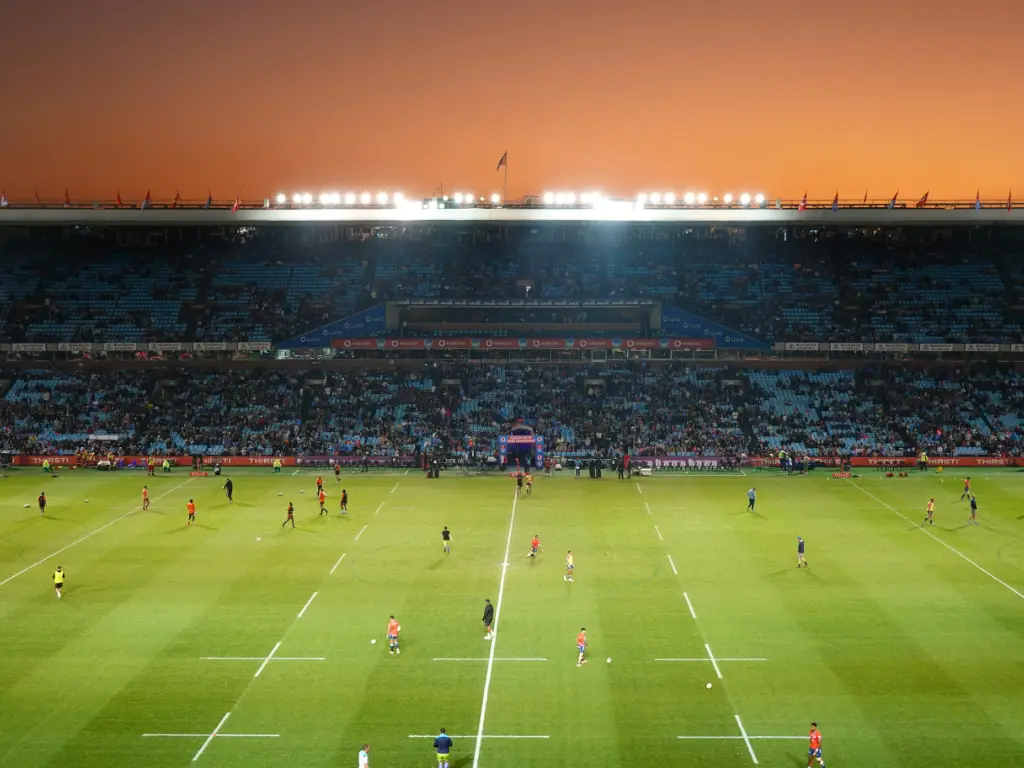
Selecting the Right LED System
Having a clear picture of the standards, the second step is to choose the hardware. This choice is not just about wattage and price, but a more in-depth analysis of the engineering of the system, quality, and the ability of the manufacturer.
1. Assess the Core Components of the Luminaire: The components determine the performance of an LED fixture. Seek systems that are constructed using components of world-renowned leaders. This consists of LED chips such as CREE or Osram and drivers such as Meanwell or Inventronics. These parts are known to perform and be reliable as per their performance and reliability specifications.
2. Examine the Thermal Management: The main adversary of the LED life is heat. A large, well-designed heat sink, usually of high-purity aluminum alloys, such as ADC12, is required. A strong thermal design will keep the fixture at the best operating temperatures, which will directly translate to a longer, more stable life. Request thermal imaging or temperature test data.
3. Examine the Optical System: The lens and reflector system defines the accuracy of the fixture. A manufacturer must provide a variety of beam angles (e.g., 15, 30, 60, 90) to adjust the light distribution to your particular field dimensions. This flexibility is important in ensuring high uniformity and light spill reduction.
4. Demand Durability and Certifications: A stadium light is a product that is subject to the elements. Demand at least IP66 dust and water ingress protection. The housing must be corrosion resistant and the fixture must have the appropriate safety and performance certifications in your area (e.g. UL in North America, CE in Europe).
5. Evaluate the Supplier, not the Product: Your relationship with the supplier is as critical as the hardware. Do they provide professional lighting design services, such as DIALux simulations, to confirm the plan prior to purchase? How do they deal with claims and what are their terms of warranty? A dedicated partner offers support at the design stage, during installation and after installation.
The selection of the proper system is an investment in long-term trouble-free operation. It involves an overall evaluation of the engineering of the product and the skills of the manufacturer.
WOSEN: Your Stadium Lighting Partner
For over 30 years, WOSEN has been an engineering-first manufacturer of high-performance LED lighting. We operate not as a mere vendor, but as a technical partner to brands, contractors, and infrastructure developers worldwide. Our approach is founded on controlling the entire production process—from mold design to final QC—within our 30,000 square-meter facility. This vertical integration allows us to deliver uncompromising quality and value.
When you partner with WOSEN for your stadium lighting project, you gain access to our core advantages:
- Robust Engineering and Premium Componentry: Our stadium lights are built for endurance. We utilize high-purity ADC12 aluminum for superior heat dissipation and construct our fixtures with top-tier international brand LED chips (CREE, Osram) and drivers (Philips, Meanwell). This commitment to quality components ensures exceptional light output, industry-leading efficiency, and a system you can rely on for years.
- Precision and Performance: With a high IP66 rating, our fixtures are guaranteed to withstand extreme weather. Our advanced anti-glare optics and precise lens designs minimize visual discomfort and ensure light is distributed exactly where it’s needed, meeting strict uniformity and TLCI standards for professional sports.
- Unmatched In-House Capabilities: Unlike assemblers who source parts, we manufacture them. Our facility includes dedicated die-casting, CNC machining, and mold-making workshops. Our 20 years of mold design experience result in private-mold products with higher precision and 50% longer lifespan than industry norms. This gives our brand clients a unique competitive edge.
- Comprehensive Quality Assurance: Quality is not a final check; it’s a continuous process. Our CNAS-standard laboratory conducts rigorous testing that far exceeds the industry standard, including 24-hour aging tests, salt spray tests up to 2000 hours, and environmental chamber tests from -40°C to 150°C. Every fixture that leaves our factory is proven to perform.
- Full-Service Partnership: We provide DIALux design simulations to ensure your lighting plan is perfect before you commit. We offer extensive customization, from beam optics to branding, and support you with visual production tracking and expert logistics. Our goal is to de-risk your project and guarantee a successful outcome.
At WOSEN, we build lighting systems designed to perform under pressure. Let our team of experienced engineers develop a tailored, high-value solution for your stadium.
A Practical Guide to LED Retrofitting
For existing stadiums with aging HID systems, an LED retrofit is one of the highest-impact upgrades available. It delivers immediate operational savings and a vastly improved experience. A successful retrofit project follows a clear process:
- Conduct a Thorough Site Audit: The first step is to document the existing infrastructure. This includes the number, height, and structural integrity of the light poles; the condition of existing wiring and circuits; and the current light levels (lux) on the field. This audit forms the baseline for the new design.
- Define the New Performance Goals: Determine the new lighting standard you need to achieve. Are you upgrading from a recreational level to a collegiate, broadcast-ready system? The Class I, II, or III standards will dictate the design.
- Evaluate “Plug-and-Play” vs. Full Fixture Replacement: Some manufacturers offer “retrofit kits” designed to fit into existing HID housings. While sometimes cheaper initially, a full fixture replacement is almost always the superior long-term solution. A purpose-built LED luminaire has integrated thermal management and optics that far outperform a piecemeal kit.
- Plan for Structural and Electrical Needs: Modern LED fixtures are often lighter than the old magnetic ballast HIDs they replace, reducing the load on poles. However, the electrical system must be evaluated. Do you plan to incorporate smart controls? This may require new wiring for data signals (e.g., DALI).
- Develop a Phased Installation Plan: For an active facility, downtime must be minimized. A phased installation, perhaps tackling one or two poles at a time during the off-season, can ensure the facility remains operational.
- Commissioning and Aiming: This final step is crucial. Each fixture must be precisely aimed according to the DIALux plan. A professional installer will use a laser aiming device to ensure accuracy. After installation, a final light meter reading across the field validates that the design meets the specified lux and uniformity targets.
A well-executed retrofit is a transformative project, breathing new life and efficiency into an existing venue.
The Future of Stadium Illumination
The development of stadium lighting is gaining pace. The future is not only brighter, it is smarter, more interactive and more part of the overall fan experience.
The next frontier is Smart and Connected Lighting. Lighting is increasingly becoming an important element of the show using DMX and DALI control systems. Consider the use of dynamic lighting patterns in time with music when introducing players, celebrating goals, or halftime performances. This turns the lighting system into an entertainment resource, making the event more immersive and memorable to fans in the stands.
There is also the emergence of Human-Centric Lighting. Studies on the impact of light on human biology are resulting in tunable systems capable of changing their color temperature. As an example, a cooler, blue-tinted light could be applied to make the players more alert during a match, whereas a warmer tone could be applied to make the post-game events more relaxed.
Lastly, decision-making will be driven by Sustainability and Data. The systems of the future will be incorporated into building management systems, which will give real-time information on energy use and operational status. Predictive maintenance alerts will warn that a fixture is about to fail. With stadiums aiming to be green and operationally lean, the data-rich, low-consumption characteristics of intelligent LED systems will ensure that they become an essential component of a venue infrastructure. The light that will be used to light the game will also be a light that will inform the managers of the game.
